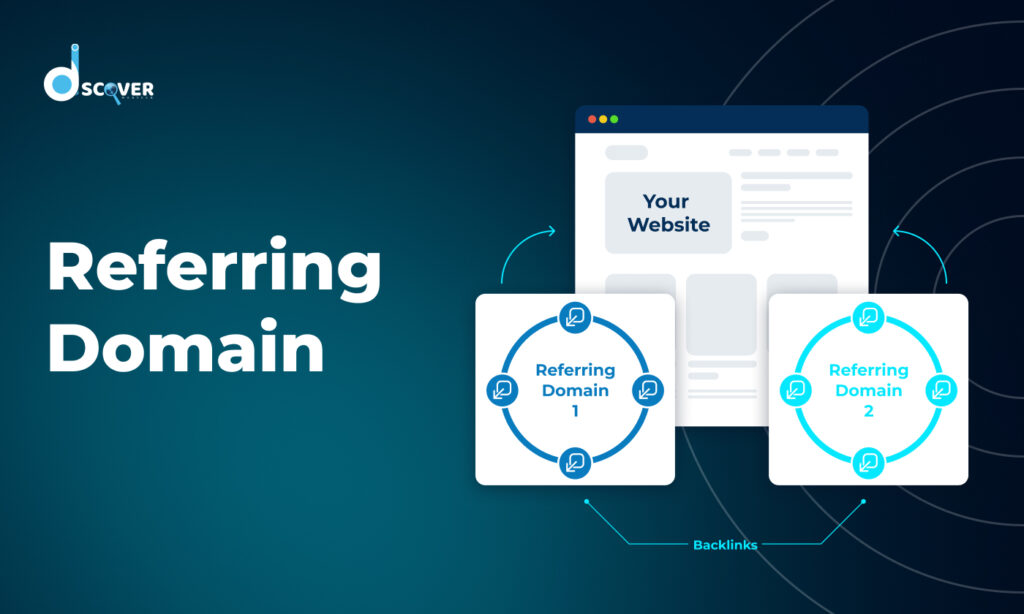
In the world of SEO, there are many factors that influence a website’s ranking, and one of the most important is the referring domain. But what exactly is a referring domain? Simply put, a it is a website that links to your site. These links are also known as backlinks, and they play a significant role in how search engines determine the authority and relevance of your site.
In this blog, we’ll explore how to analyze referring domains and why they are critical for improving your SEO performance.
The Role of Referring Domains in SEO
Understanding the importance of referring domains in SEO is the first step in analyzing them effectively. They are essentially a vote of confidence for your site. When another website links to your content, it signals to search engines that your content is trustworthy and valuable.
Search engines, like Google, use these signals to determine where your site should rank in search results. A higher number of high-quality backlinks can significantly improve your SEO, boosting your chances of appearing on the first page of search results. However, it’s not just about quantity; quality matters more than quantity when it comes to backlinks. Consulting with an SEO expert can help you develop a strategy to acquire valuable backlinks and improve your website’s ranking
Tools for Analyzing Referring Domains
To analyze referring domains, you’ll need to use some powerful SEO tools. There are several tools available that can provide detailed insights into your inbound links, helping you understand how they are influencing your SEO efforts.
Some popular tools for this include:
- Ahrefs: Ahrefs provides detailed data on the backlinks and referring domains of any website. You can see which domains are linking to your site and how valuable those links are.
- SEMrush: SEMrush is another tool that allows you to analyze backlinks and referring domains. It gives you an overview of the domains linking to your site and their authority.
- Moz: Moz’s Link Explorer tool helps you discover the number of referring domains, domain authority, and the quality of links pointing to your website.
- Hotspot SEO: Hotspot SEO offers in-depth insights into your backlink profile and referring domains. It provides data on the quality and relevance of the links pointing to your website, helping you identify opportunities for improving your domain authority and search rankings.
These tools make it easier to keep track of your backlinks, monitor your referring domains, and assess how they are contributing to your SEO efforts.
Key Metrics to Analyze in Referring Domains
When analyzing referring domains, there are several key metrics you should focus on. These metrics can help you understand the quality of the domains linking to your site, as well as how they impact your rankings.
- Domain Authority (DA): DA is a metric developed by Moz that predicts how likely a website is to rank on search engines. The higher the DA of a referring domain, the more valuable the link is for your site’s SEO.
- Trust Flow and Citation Flow: These metrics, offered by Majestic SEO, measure the quality and quantity of backlinks to a site. Trust Flow indicates how trustworthy a site is, while Citation Flow measures the number of links a site has. Both are important when evaluating the quality of a referring domain.
- Anchor Text Relevance: The anchor text of a backlink (the clickable text) can tell search engines what the link is about. Analyzing the anchor text helps you understand if the referring domain is relevant to your content and target keywords.
- Link Quality and Relevance: Not all links are equal. High-quality links come from reputable, relevant websites. Relevance is particularly important—links from websites in your industry or niche are more valuable than links from unrelated sites.
Identifying High-Quality Referring Domains
Not all referring domains are created equal. Some may come from spammy or low-quality sites, which can harm your SEO rather than help it. Identifying high-quality referring domains is essential for improving your SEO performance.
High-quality referring domains typically have the following characteristics:
- High Domain Authority (DA): Quality domains usually have high DA scores, meaning they are well-established and trusted by search engines.
- Relevance to Your Niche: Links from sites in your industry or niche are more valuable than links from irrelevant domains.
- Natural Link Profile: A natural link profile means that the backlinks to a site come from a variety of different sources, not just one or two spammy sites.
On the other hand, you should avoid referring domains that come from low-authority or irrelevant websites. These can actually hurt your SEO by signaling to search engines that your site is linked to untrustworthy sources.
How to Build a Strong Referring Domain Profile
Building a strong referring domain profile is essential for SEO success. This means acquiring high-quality backlinks from reputable sites. Here are a few strategies for gaining valuable referring domains:
- Guest Posting: Writing guest posts for reputable websites in your niche is a great way to acquire quality backlinks. Make sure to focus on sites that are relevant to your business.
- Content Marketing: Creating high-quality, shareable content is another way to attract referring domains. When you publish valuable content, other sites are more likely to link back to it.
- Outreach: Reach out to other websites in your industry and ask for backlinks. This can be done through personalized emails, offering mutual benefits for linking to each other’s content.
Analyzing Competitor Referring Domains
One of the most effective ways to build a strong referring domain profile is by analyzing your competitors’ backlinks. By using tools like Ahrefs or SEMrush, you can see which referring domains are linking to your competitors, and then work on acquiring similar links for your own site.
This process, called competitor analysis, can give you valuable insights into the types of sites that are linking to your competitors and how you can leverage similar opportunities for your own SEO strategy.
Monitoring Referring Domains for Ongoing SEO Success
SEO is an ongoing process, and the same goes for monitoring referring domains. It’s important to regularly track your backlinks and make adjustments when necessary.
- Monitor for Lost or Broken Links: If you lose a valuable referring domain or if a link breaks, it’s crucial to fix it quickly. Regularly check your backlinks to ensure they are intact.
- Regularly Analyze New Referring Domains: As you build your link profile, continue to analyze the new referring domains that link to your site. This will help you stay on top of your SEO performance and ensure that your links remain high-quality.
Final Thoughts
Analyzing referring domains is a powerful way to improve your SEO performance. By focusing on the quality and relevance of your backlinks, using the right tools to track and assess your domains, and continuously building a strong link profile, you can see significant improvements in your search engine rankings.
Remember that SEO success doesn’t happen overnight, but by staying consistent and monitoring your referring domains, you’ll be well on your way to improving your online visibility and achieving better SEO results. A Digital Marketing Expert can guide you in leveraging referring domains effectively, ensuring long-term SEO success.
Frequently Asked Questions (FAQ’s)
How many referring domains are good for SEO?
The ideal number of referring domains varies depending on the competition and the industry. Generally, having a diverse set of high-quality referring domains is better than focusing solely on the quantity. A higher number of quality referring domains signals trustworthiness and authority to search engines, which can positively impact SEO rankings.
What are the 3 main top-level domains (TLDs)?
The three main types of top-level domains (TLDs) are:
- Generic TLDs (gTLDs): These include domains like .com, .org, and .net.
- Country Code TLDs (ccTLDs): These are domain extensions associated with specific countries, such as .uk (United Kingdom), .ca (Canada), and .de (Germany).
- Sponsored TLDs (sTLDs): These are specialized domains such as .edu (education) or .gov (government).
Which domain type is best for SEO?
For SEO, .com is generally the best option, as it is the most recognized and trusted by users and search engines. However, the focus should be on the quality of content, backlinks, and user experience. If targeting a specific country, a relevant country-code TLD (e.g., .ca for Canada) can be beneficial for local SEO.
What is TLD in SEO?
A Top-Level Domain (TLD) refers to the last part of a domain name, such as .com, .org, or .net. In SEO, TLDs don’t directly affect rankings, but they can impact trust and click-through rates. Some TLDs may carry more authority, and using a relevant TLD can help with branding and user perception.
Which is the simplest domain?
The simplest domain is usually a short and memorable .com domain. A concise domain name is easy for users to remember and type, which can lead to better user experience, higher traffic, and improved SEO performance.


